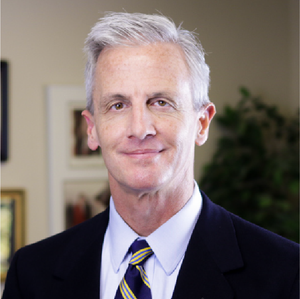Education
Brandon Dutcher | September 2, 2014
Educator says Oklahoma has ‘some really bad teachers.’ How do we get more good ones?
Brandon Dutcher
The 2014 Education Next survey, overseen by the Harvard Program on Education Policy and Governance, was released last month. Among other things, the survey asked Americans to grade the teachers in their local schools on the quality of their work.
As you can see from the pie charts below, the average member of the public says one out of every five teachers is unsatisfactory (assuming we count the traditional “C” grade as satisfactory). Teachers themselves aren’t quite as harsh as the public at large, but even teachers deem 13 percent of their colleagues unsatisfactory.
.jpg)
Here in Oklahoma, one local superintendent — a vocal defender of our state’s public school system — recently issued a forthright assessment of his own. “Let me be blunt,” he said.
We have some really bad administrators and some really bad teachers who shouldn’t be able to get a job. Yep, call me names if you want, but you know I’m right. We can all think of a teacher or administrator who shouldn’t be a teacher or administrator. Hell, the only reason the really bad educators are able to keep getting hired is because there is no one else out there keeping the bad ones from getting a job. This is embarrassing.
Recent news reports have cited a survey which found more than 800 teaching vacancies across Oklahoma as the school year began. How are we to fill these vacancies — and preferably with excellent teachers and good teachers rather than mediocre and bad ones? For some people, the obvious answer is to raise teacher pay across the board. But assuming the Education Next/Harvard PEPG survey indeed reflects the reality in the schools, Oklahoma currently has up to 8,100 unsatisfactory teachers. It doesn’t make any sense even to employ these teachers, let alone increase their salaries.
Besides, “raising teacher pay will not work,” says Harvard-trained quantitative analyst Jason Richwine. “In fact, it could be counter-productive. The reason lies not just with the well-known difficulty in predicting who will be a good teacher, but also with the entrenched hiring system of public schools.”
Contrary to public perception, the average public school teacher already receives total compensation that is greater than what he or she could earn in the private sector. … So the public is already paying for more highly-qualified teachers than it is getting. If the skills of the teacher workforce have yet to match the level of current compensation, it is not clear how an additional raise would produce better results.
Richwine points to research from Vanderbilt economist Dale Ballou and University of Missouri economist Michael Podgursky showing that higher pay without reforms could actually drive down teacher quality. Pay hikes are not the answer, he says. “Only root-and-branch reform” — involving certification, licensure, tenure, and the like — will suffice.
Of course, if we really want to get to the root of the matter, we will look to the free-enterprise system, rather than to a unionized government monopoly, for the provision of education. The market system is better suited to keep out the “really bad teachers who shouldn’t be able to get a job” — and to make millionaires out of some teachers who really deserve it.

Brandon Dutcher
Senior Vice President
Brandon Dutcher is OCPA’s senior vice president. Originally an OCPA board member, he joined the staff in 1995. Dutcher received his bachelor’s degree in political science from the University of Oklahoma. He received a master’s degree in journalism and a master’s degree in public policy from Regent University. Dutcher is listed in the Heritage Foundation Guide to Public Policy Experts, and is editor of the book Oklahoma Policy Blueprint, which was praised by Nobel Prize-winning economist Milton Friedman as “thorough, well-informed, and highly sophisticated.” His award-winning articles have appeared in Investor’s Business Daily, WORLD magazine, Forbes.com, Mises.org, The Oklahoman, the Tulsa World, and 200 newspapers throughout Oklahoma and the U.S. He and his wife, Susie, have six children and live in Edmond.